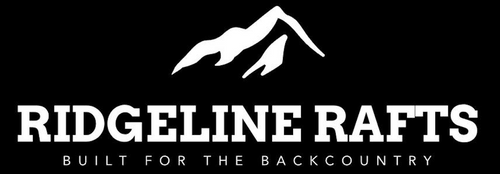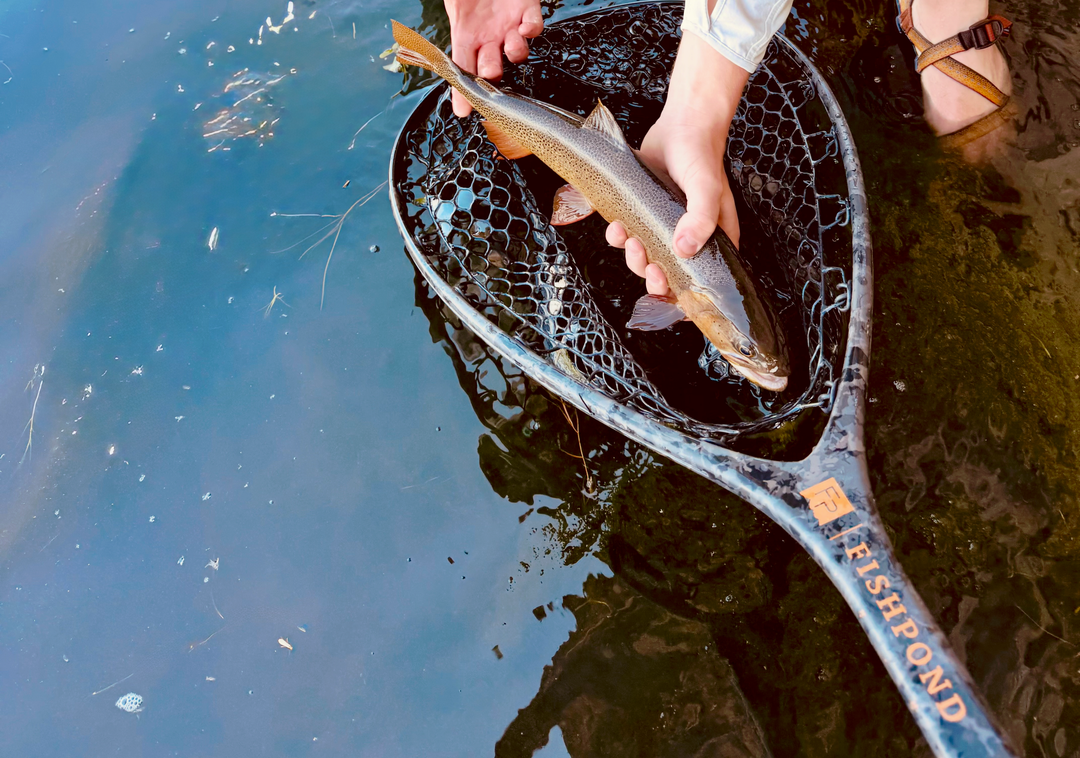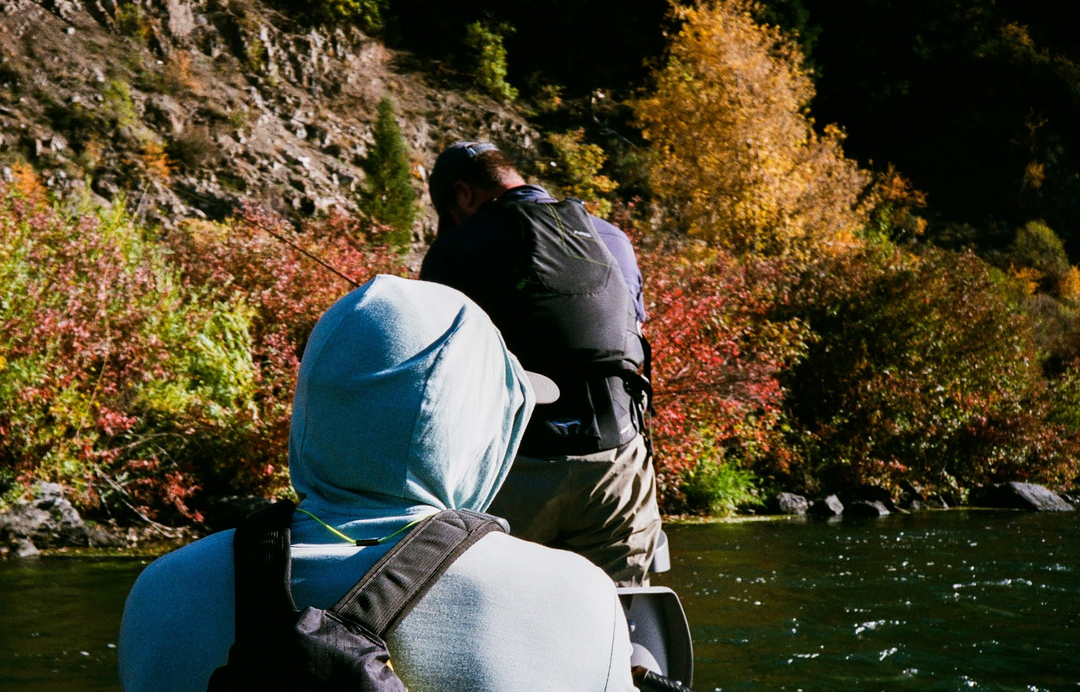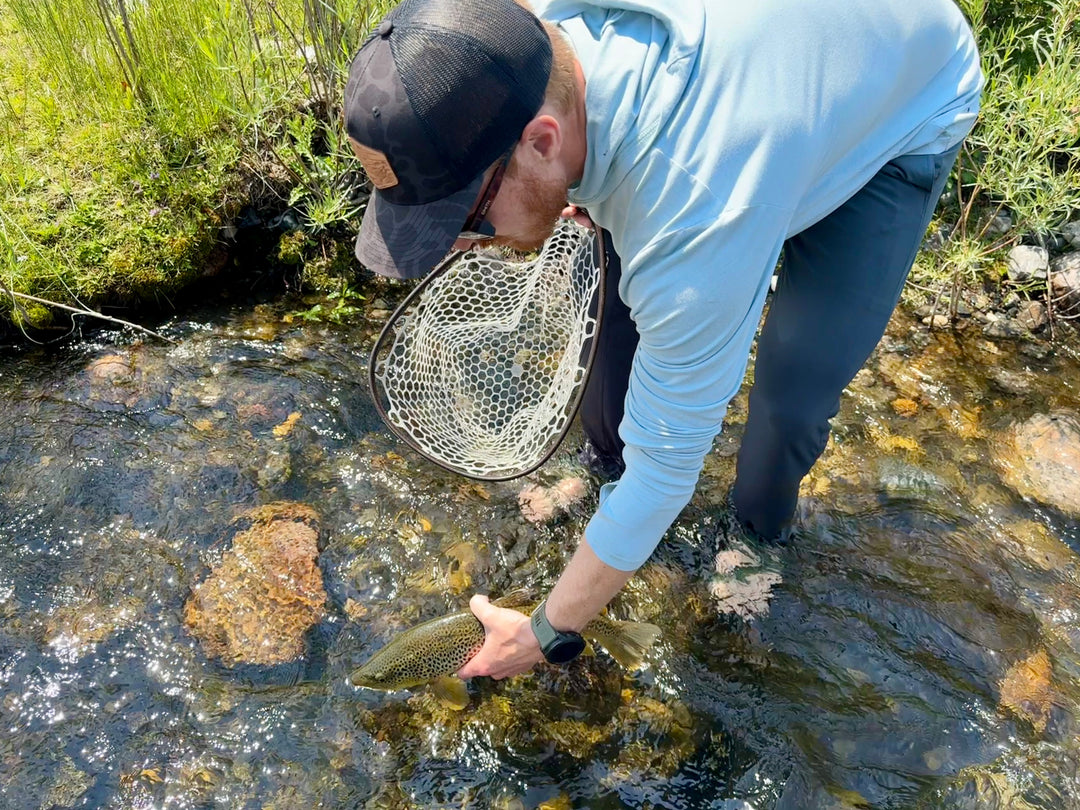Don't Buy an Inflatable Fishing Raft For Your Car

When people start looking for their first inflatable fishing boat they will begin to get pummeled with Facebook and Instagram ads. The bulk of the content of those ads and marketing is around how portable an inflatable raft is. This is an extremely appealing proposition when you have a small car or SUV and not needing to buy a trailer - I am abundantly aware as I was in this exact situation several years ago. But after years of fishing out of these rafts - that were made for easy transportation - I found that they left something to be desired when I was floating. Ease of transportation is a nice feature. But let’s not forget why we buy fishing boats in the first place: to fish on the water.
When you buy a raft you’re not dropping thousands of dollars on a vessel just to make it easier to toss on a car roof or into the bed of a truck. You’re investing in a tool for your fishing trips, a way to explore more water, and hopefully, to create adventures worth remembering — with your friends and family.
Marketing teams know that words and phrases like “portable,” “lighter,” "no trailer required" and “easy to load” sound great — especially when you’re picturing yourself heading out on a whim. But here’s the hard truth: portability often comes at the cost of on the water performance. The river doesn’t care about how easy your boat was to transport.
As you are starting your search for your own inflatable boat remember the end goal - floating on the water.
The Portability Trap
In any boat you have to make compromises somewhere when designing - it's impossible to have all pros and no cons. It's a delicate balancing act to try and accomplish various design goals that frequently are at odds with each other. For instance you can't create the most stable raft possible without making it wider, which will also make it heavier (which helps with the stability) and harder to row. You also can't make the most compact boat without compromising on stability.
Inflatable fishing boats sold with a transportation emphasis are often designed around weight savings and compactness. Initially that sounds appealing, but once you get on the water, you start feeling the drag of those design decisions. Convenience is an easy sell. But convenience doesn’t always equal a stable, quality boat that helps you fish.
When you are buying based on ease of transportation - you might save 20-30 minutes getting your boat to the water. But then you’re stuck in an unstable, under-rigged, hard-to-row raft for the next 5 to 10 hours. That’s not a trade off most people think about when they start their search for a raft. They thought about the first part - getting to the water, but not the second part (the most important part) fishing on the water.

And to be perfectly honest — very few anglers truly just “toss the boat in and go.” Yes, you can get the boat to the river without a trailer. Yes, you can take the boat off the top of your SUV or out of the bed of your trailer super quickly, but that doesn't mean you're getting on the water that quickly. Here’s just a few of the things that have to happen before you even push off:
-
You run a shuttle.
-
You have to rig rods
-
You load coolers, dry bags, fly boxes, nets.
-
The entire party has to take a piss.
-
You corral kids, dogs, or buddies.
-
You argue over who’s rowing first.
You didn't need a trailer to get to the boat ramp, but you're still going to be sitting for at least 20-30 minutes for a short shuttle run during which you could've spent setting up an inflatable boat that was more specifically designed for rowing in the water. I completely understand not wanting to have to set up a boat after a long car ride, but as we'll discuss later in this article there are more reasonable solutions.
What You Give Up for Lightweight Convenience
A boat that’s made to be super portable often means one thing: compromises. If you're looking at rafts that heavily emphasize their transportation or portability you need to think about what happens once you’re actually on the river? These are just a few of the compromise you make:
1. Stability

A lighter, typically narrow, raft may sound appealing, but stability suffers — especially when someone tries to stand up. Lack of width to ensure a boat easily fits into a truck bed means less hull contact with the water, the boat becomes more reactive to every motion and buoyancy shifts are very noticeable. The boat literally feels tippy. As we age stability becomes increasingly more important when you're no longer a 24 year old. In fly fishing it's is an even more important factor for all ages because it allows you to stand and fish. Its hard to make accurate cast in an unstable inflatable boat when you're constantly worried about flying overboard.
That’s not just annoying — it’s also a safety issue. Moving water can be very dangerous and once gravity takes a hold of you because your buddy took one wrong stroke of the oars while you were lifting your leg to untangle your fly line and sends you rolling into the water - it can ruin your day or in the worst case circumstance - drown you.
Not having a stable raft (standing or rowing) also limits the rivers you can access. You can be an absolute wizard in the rower's seat, but that doesn't mean you can, or should, safely go down the waves of a class 3 rapid in a really narrow raft that's more prone to tipping than their wider cousins. Most people aren't wizards on the sticks, or at least they aren't for a long while, so being highly susceptible to tipping by design and being a less experienced rower isn't a great combo going into something even smaller like a class 2 rapid.
The iconic "Mother in Law" rapid on the Utah Green is really a class 2, but gets class 3 rating. One of the reasons is because this section sinks boats every single year. There are a couple other class 1 rapids on the A section of the green, but if you can't safely navigate a pretty manageable class 2 rapid (towards the end of the A section float) you miss out on being able to float the entire section - which is one of the most beautiful floats in the States.
The raft you have makes a big difference in your ability to confidently and safely navigate a river. You want an inflatable fishing boat that is more forgiving and can provide you with greater stability to allow you to stand up and fish, not feel like you're going to tip constantly, and not inhibit you from floating certain rivers.
2. Rowing Position & Performance
One of the other compromises that tends to happen in many 3 man fishing boats specifically is the location of the rower and oar towers. When you have a really narrow raft (think 45" to 55" range) you don't have a lot of space for 3 folks so the way to make the 3rd angler more comfortable is by moving the rower forward to give the back angler some breathing room. This may sound like a reasonable solution that doesn't seem like there could be any downsides, but in doing so you start fighting physics.
Leverage and Pivot Point
When rowing, your goal is to rotate and slide the boat in the water to steer or move it. This happens most effectively when your oar towers are at or behind the boat’s midpoint, because:
You become the pivot point: The rower is essentially the fulcrum. Placing the oars in the back half turns the boat in front of you into the “lever arm” that moves with your strokes. Rowing pulls the bow backwards while pushing the stern away from you — giving directional control.
If oar towers are too far forward:
-
You lose leverage over the front of the boat.
-
The stern drags or swings uncontrollably.
-
The raft won’t “track” (move in a straight line) efficiently.
Tracking and Steering Stability
The ability to hold a straight line or make small course corrections (tracking) depends on how much water resistance (drag) you can use effectively:
-
When oars are in the rear, every stroke affects the whole raft.
-
Think of it like steering a canoe from the back — strokes in the rear change direction more precisely.
-
-
This is incredibly important when crab/skul/ferrying (moving the boat side to side).
If you have a frame that allows you to move the oar towers - move them too far forward and take a several back to back powerful stokes and watch how much more the oars flex compared to when they're further back in the correct location. When the rower and oars are shoved to far forward you’re burning energy fighting the water instead of letting the boat cruise naturally. The force needed to ferry, track, or hold position increases, and your back feels it by lunch.
3. Gear Capacity & Layout on Fishing Trips
A question or two you have to ask ask you're looking for an inflatable boat is - "How much will I be bringing on each float?" and "Where can store my gear?" A lot of modern fly fishing rafts have minimal frame structure or floor space to store your equipment. The solution is almost universally to put an accessory rack on the back of the boat, which again doesn't seem like a bad idea, but when you have a very light weight narrow boat and then you dump all the extra weight onto the very back of the boat plus the 3rd angler your boat will do a wheelie to some degree or another. This seems like the golden ticket, but ultimately hurts on the water performance because you're stacking all the weight on top the outer edge of the boat creating the most downward leverage possible.
My niece's favorite show, Bluey, illustrating this example wonderfully. A lot of little items - food cooler, bags, Yeti GoBox, beer coolers, etc add up to a lot more weight than it seems the further that distance gets from the centerline of the raft.

A gear rack isn't necessarily a bad idea, but it is frequently used as a crutch to compensate for the narrow nature of these modern fishing rafts. Distributing the weight more evenly throughout the raft will make for a much better performing raft that is smoother to row and easier on the body. A smoother rowing raft makes it easier to position the raft for you angler and hold a line which translates into a better chance of hooking a nice trout.
Don't fixate on getting to the river and think about what is going to provide the best experience on the water.
Trailers: The Inevitable Evolution
Most anglers who fish more than a handful of times a year eventually ditch the “throw it on the roof” mentality and invest in a trailer. And here’s the kicker: most of the boats that are marketed as portable end up living on trailers anyway.
At my last company, we rarely saw people using the truck bed or rooftop approach — unless they had no other option. Once someone fishes enough, they moved to a trailer. Why? Because the time it takes to launch a boat becomes insignificant when weighed against the value of on-water performance. Having a trailer gives you the benefits of ease of transportation AND most importantly you can get a raft that is focused on the water performance. Hook the truck up and go. Its easier and faster than putting it in the bed of your truck.
Trailers are also just safer. A small SUV with a sail in the form of a raft on the roof can be nightmare driving on the highway at 70mph with crosswinds. It's also just safer and easier on your body. If you're 55 years old you probably aren't going to want to put a 100lb+ boat over your head on to the top of your car when you can easily walk the boat onto the trailer at the boat ramp.
Trailers provide you far more versatility for your adventures and you can typically find flat bed trailers for pretty cheap. I recently found a used trailer designed for snowmobiles that was the perfect length and width I was looking for and ended up costing me $400. It's best to just plan on adding the cost of a trailer to the price of the inflatable boat you're looking from the get go.
-
You can simply roll your boat on and off at the boat ramp
-
You will be more inclined to continue to hit the water consistently because your boat is already packaged and on board ready to go.
-
You can bring more passengers with all your accessories and equipment on the trailer and not stuffed in the car.
Even if your boat can fit in a truck bed or ride on a roof rack, that doesn’t mean it’s the best way to transport it. The efficiency, safety, and convenience of a trailer are hard to beat. The more you float, the sooner you’ll be on the hunt for a trailer.

Final Word: Buy for the River, Not the Roof
So, ask yourself: what are you actually buying? Ease of transport sounds great in a brochure — but it doesn’t help you on the water.
Like I mentioned earlier 1 boat can't do everything and when we were designing out rafts we focused first on the water performance and then transportation second. You'll have to deflate the tubes a little to put it in the bed of your truck, but all you have to do is top off the tubes while shuttle is being ran and you're good to go. You can still put it on the roof of a vehicle too if that is your preferred method.

This slight sacrifice in transportation enabled our boats to get the benefits of both worlds:
The stability, space, and durability of a white water raft AND the nimble, high floating handling features of these transportation focused rafts.
The best boat package is the one that helps everyone in the raft stand, sit, and row with control. One that moves cleanly, holds its center, and doesn’t feel like it’s fighting you every mile after you push off from shore. Whether you’re scouting a side channel, threading through logs, or pulling on the sticks so your friend gets that perfect drift, quality matters more than how easily it fits in on your vehicle.
Don’t let “portable” be your main buying point. Choose a durable, maneuverable, well-balanced vessel — and you’ll fish harder, longer, and better.
Because at the end of the day, the river is the only critic that matters.




